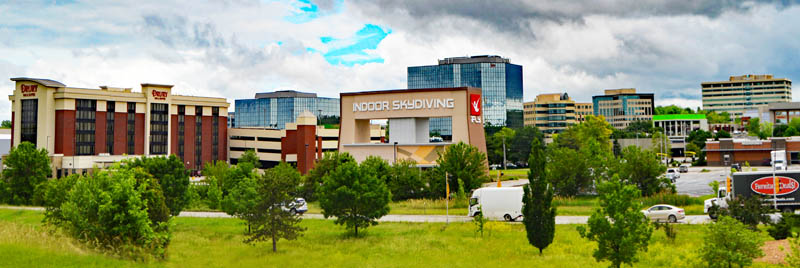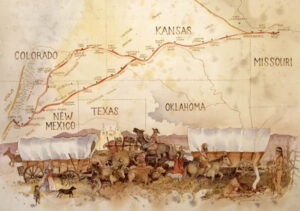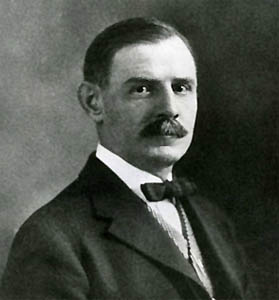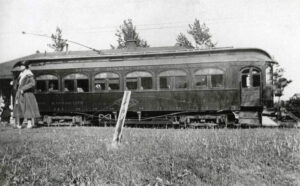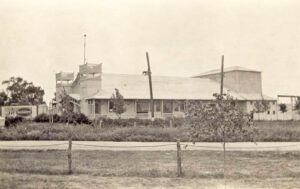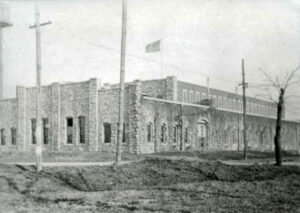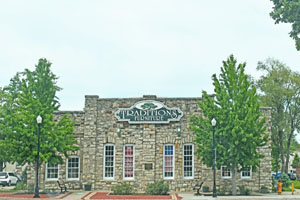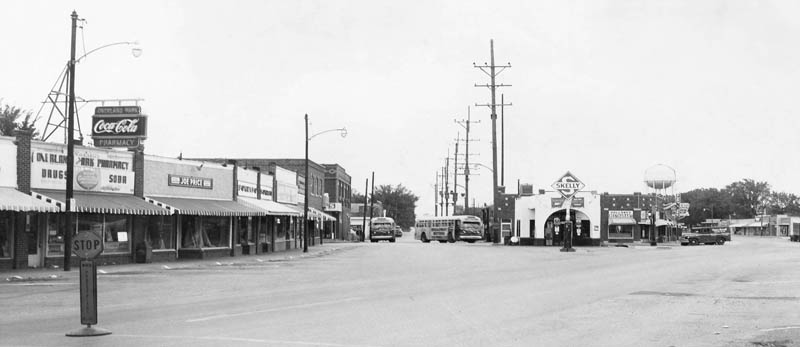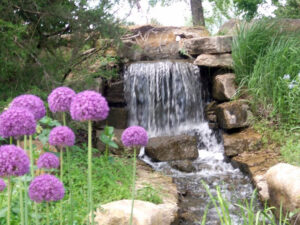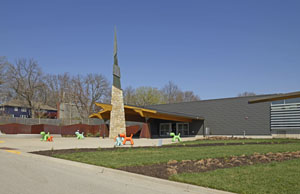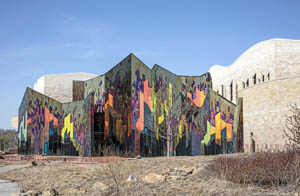Overland Park, Kansas, in Johnson County, is the second-most populous city in the state, following Wichita, Kansas. It is also one of four principal cities in the Kansas City metropolitan area and is more densely populated than the largest suburb of Kansas City, Missouri. As of the 2020 census, the population of the city was 197,238.
Overland Park borders other communities on all sides, including Kansas City, Kansas, to the north, Mission and Prairie Village to the northeast, Leawood to the east, Stilwell to the south, Olathe and Lenexa to the west, and Shawnee and Merriam to the northwest. Most of Overland Park, specifically the part of it lying north of 159th Street, lies within the area of Johnson County referred to as Shawnee Mission.
Once the jumping-off point for traders on the Santa Fe Trail and pioneers and gold seekers heading west on the Oregon and California Trails, pre-settlement Overland Park was a sparsely populated region with little to no roads and prairie as far as the eye could see.
That changed when William B. Strang arrived in the area. A successful international railroad developer based in New York, Strang’s mother convinced him to come to Kansas City after a devastating flood on May 30-31, 1903. This great flood submerged cities along the Kansas River from Salina to Kansas City, which prompted Strang to propose building a suburban community on higher ground in rural Johnson County. He soon brought his mother to the farm of George Metcalf, a friend whose farm was across the state line. Strang was particularly intrigued by a plot of land owned by several farm families on a bluff. His mother loved the area and the air so much that he decided to construct a flood-proof bedroom community for the metro area and purchased the land. This area, now north Overland Park, was part of the Mission Urban Township, which included the cities of Mission and Prairie Village. The area was comprised of land that other communities shunned.
Strang envisioned a self-sustaining, well-planned, “park-like” community with strong commerce, quality education, vibrant neighborhoods, convenient transportation, and accommodating recreational facilities. The name is reputedly a combination of the vision of a “park-like” city crossed with the alternate name for the Santa Fe Trail (Overland Trail). In his vision, residents of the new community would travel to Kansas City via an electric interurban railroad built above the floodplain. This would provide convenient access to jobs in the city for suburban dwellers, as well as an easy way for urban residents to visit the country for fresh air and recreation.
He then began to plot subdivisions, including one named “Overland Park,” along a military roadway southwest of Kansas City, later becoming the city’s principal thoroughfare. He developed large portions of what would later become downtown Overland Park.
He also acquired land and secured easements to run a railroad line through properties he did not own. His energy and experience kept these activities moving at a steady pace. By early 1905, he had organized two projects: the Strang Land Company and the Missouri and Kansas Interurban Railway — better known as the Strang Line. He also contracted with the Metropolitan Street Railway Company in Kansas City to connect his interurban line with the existing trolley system in the Westport area. He then set about hiring experienced railroad men to manage the construction of the Strang Line.
Thomas Riley, a well-known short-line railroad developer who had worked with Strang on other railroad projects, was hired in 1905 to manage the new interurban line. He also served as vice president of the newly organized Strang Land Company. Under Riley’s management, Strang built a flood-free railway without using a single bridge or other support structures to span the ten-mile stretch between State Line Road and Overland Park. The Strang Land Company grew busy selling off individual lots of land in business and residential segments of the new town.
Never satisfied with the ordinary, Strang introduced a unique type of interurban car to service his new electric line. He commissioned a Philadelphia company to build gasoline-electric cars instead of using electric trolley cable lines to power the railroad cars. These innovative cars were said to be free of the vibration experienced on the motorized cars used by the steam railroads. Strang named his first car Ogerita, after his niece, and the second Marguerite for his wife. Strang’s passenger cars were painted a bright red-orange to distinguish them from other streetcars and railcars that transported people and freight throughout the Kansas City area. The interurban cars were modern in every respect — from their motorized engines to their luxurious interiors featuring wicker furnishings. Brass fixtures, pull-down blinds, bathrooms, and non-smoking seating areas improved passengers’ comfort.
In 1906, the 17-mile railroad, which followed the Santa Fe Trail from Westport in Kansas City, Missouri, to just east of Olathe, was completed. It officially opened on May 20, 1906, with a 28-minute run from Lenexa to Westport. The cities of Lenexa, Overland Park, and Olathe were station stops along the line. According to Strang’s advertisements — it was “the highest, coolest, and most beautiful ride out of Kansas City.” Overland Park was advertised as a place for families to live with open space and independence, with the ability to “raise a few chickens, to grow flowers and vegetables, … [and] keep your own cow.”
By 1907, Overland Park became known as a growing, modern community. New businesses were opening in the business district. A large dance pavilion was completed near the new Overland Park station, where passengers waited for the next train in a well-lit, heated building. The pavilion was used year-round for social activities. Regular dances featuring Kansas City bands attracted large crowds from the metropolitan area.
The first commuters transferred from the Strang Line terminus at State Line Road to catch the Roanoke streetcar into downtown Kansas City. By 1909, passengers on the Strang Line could travel to Kansas City’s commercial district at 7th and Walnut Streets without transferring to another line.
Strang also had his hand in the development of Airfield Park in 1909, which combined a landing strip, aviation school, hangars, and a grandstand for the locals who were fascinated with flying. That year, Strang agreed with Charles K. Hamilton to host the area’s first flying exhibition, which featured a biplane with wings made from bamboo and rubberized silk. Many renowned aviators made Overland Park a stop, including the Wright Brothers. In 1913, Strang constructed a large pavilion building at the park, which housed a dance floor, classroom space, and a stage for performances. The exterior featured towers for spectators and a large veranda. The airfield and park were roughly located between 83rd Street on the north and 87th Street on the south, Lowell Avenue on the west, and Riley Street on the east.
The Strang Line continued to prosper until 1916, when automobiles and trucks became the preferred methods of transportation and shipping. Afterward, Strang Line struggled to compete with an expanding trucking industry and automobiles.
At the end of World War I. Soldiers returned from the conflict in Europe and purchased homes in the suburbs, bringing a steady increase in automobile traffic.
Before Strang died in 1921, he established several housing developments, the interurban railroad, and an airfield. Visitors can see remnants of his interurban line in Downtown Overland Park today, along with his limestone car barn at 79th and Santa Fe Drive and his Carriage House at Thompson Park at 8045 Santa Fe Drive.
While Kansas City, Missouri, was still reveling in its Prohibition heydays, Kansas City Power & Light relocated to Overland Park in 1924, bringing jobs and financial security.
By 1925, a paved highway connected Olathe with Kansas City and steadily reduced passenger service on the Strang Line.
One of the keys to Overland Park’s long-term success was its ability to survive the Great Depression. In combination with the repercussions of the Dust Bowl days and World War II, Mission Urban Township experienced a stasis in the late 1930s and early 1940s, followed by a boom in residential development.
Despite their efforts to continue passenger service, the Strang Line could not compete with new highways and the prestige and convenience of commuting to the city in one’s own automobile. By November 1937, commuters could drive along two new concrete roadways — US 50 and K-10 — from Olathe to southeast Kansas City in half the time it took on the Strang Line. When the Strang Line made its final run on July 9, 1940, it was the sole survivor of numerous interurbans that once operated out of Kansas City.
In 1951, the Kansas River flooded Kansas City while the community on the bluff stayed nice and dry.
On May 20, 1960, Overland Park was officially incorporated as a “city of first class,” with a population of 28,085 and 13 square miles of land. True to Strang’s vision, city leaders established a comprehensive plan concentrating on land use, parks, schools, zoning, commercial and retail development, expressways, and housing.
This ushered in a period of individuation as Overland Park established its own infrastructure of schools, businesses, and city services. Very early in its formal existence, the Overland Park government initiated the practice of citizen surveys to target key concerns of the populace and to measure satisfaction with the quality of life.
An annexation in 1965 nearly doubled Overland Park’s size. Expanded populations led to the creation of larger municipal departments, police departments, infrastructure, school systems, and other services. More and more people were living and working in Overland Park, shifting its status from a “bedroom community” to what the Johnson County Sun newspaper dubbed “Executive Country.”
Significant developments also began in Overland Park, including many residential subdivisions, Metcalf South Shopping Center, Corporate Woods, Oak Park Mall, and the early days of Deanna Rose Children’s Farmstead. During this time, the city built a new City Hall and moved many operations to Santa Fe Drive and Antioch, where the City Hall is today. Thirty years after incorporation, the population had nearly quadrupled to 111,790 in 1990.
In the early 1990s, City officials focused on renovating the historic downtown area, dedicating the Clock Tower Plaza and building the Farmers’ Market pavilion. Eventually, this included opening the Matt Ross Community Center at 81st and Marty. During this decade, Sprint’s World Headquarters was established.
Population growth in the city is mainly attributed to traditional suburban development, as well as the city’s history of annexing nearby areas.
In 2017, the community initiated a community-wide project to consider not only land use but also the city’s strategic vision for the future. Forward OP incorporated public input from across the community to develop goals that support legislative action to create a welcoming, engaged, sustainable, and connected city with a strong economy.
The service sector constitutes most of the local economy. Health care, retail trade, professional and technical services, finance and insurance, and information technology are the city’s five most prominent industries. Companies with headquarters in the city include Black & Veatch, Ash Grove Cement Company, and Compass Minerals. The city seeks to attract technology companies, notably Netsmart Technologies, which relocated its headquarters there in 2011. Restaurant chain Applebee’s was headquartered in the city from 1993 to 2007. It is also home to the Overland Park Xchange building, the 3rd largest office building in the Kansas City Metropolitan Area, totaling 735,000 square feet of office space. It was home to the Sprint Corporation before its merger with T-Mobile in 2020. Part of its former corporate campus was sold in 2019 to Occidental Management, a firm. Telephone company Embarq formerly had its national headquarters in Overland Park before its acquisition by CenturyTel in 2009 and still employs several hundred people in Gardner.
The cost of living in Overland Park is below average compared to other areas in the United States.
Present-day Overland Park has been a regular on national ratings for quality of life, education, affordable housing, appeal to businesses, and population growth.
The city has developed a positive reputation in American media as an affordable and family-friendly community. CNNMoney.com has consistently ranked it in the top 10 of its 100 Best Places to Live in the United States. In 2015, Forbes ranked the city among the 25 Best Suburbs for retirement. In 2015, Overland Park was named No. 1 in the nation for “Top 10 Best Cities for Families”. It was also recognized as No. 15 for “America’s 50 Best Cities to Live” by 24/7 Wall Street. It was awarded the No. 1 city in the country for first-time home buyers in 2015 by WalletHub, citing its low crime rate and outstanding schools. BusinessWeek ranked the city as one of “The Best Places to Raise Your Kids,” and U.S. News & World Report ranked it among “America’s 10 Best Places to Grow Up”. In 2014, Housing Wire ranked it number three in its list of “The 10 absolute best housing markets for families”.In 2018, it was awarded “Best City to raise a family” by WalletHub and “One of the most popular cities for millennials” by CNBC.
Overland Park now has a combined land area of 75.37 square miles, spanning nearly the full north-south length of Johnson County.
The city lies on the northern edge of the Osage Plains, a few miles south of the Kansas River in northeastern Kansas. It is located at the junction of Interstate 435 and U.S. Route 69 immediately east of Olathe, the county seat. The city center is roughly 13 miles south-southwest of downtown Kansas City, Missouri.
Points of Interest
Overland Park Arboretum and Botanical Gardens – The 300-acre arboretum and botanical garden opened in 1991. It is a mile west of U.S. Highway 69 on 179th Street in Overland Park. It includes mature trees and limestone bluffs, with nearly six miles of trails and two bridges across Wolf Creek, a major tributary of the Blue River. The Arboretum opened in 1990, and the first garden was dedicated in 1996. The arboretum has been developed over several decades, with nearly 85% of the site set aside for natural ecosystems. The City of Overland Park, Kansas, operates it.
Oak Park Mall – This super-regional shopping mall is one of the area’s top shopping locations, with over 180 stores. Covering an area of 1,607,803 square feet, it is the largest mall in the Kansas City Metro Area and the entire state of Kansas. The mall is anchored by two Dillard’s locations, Macy’s, Nordstrom, JCPenney, Barnes & Noble, and H&M. It is located at 11149 West 95th Street.
Deanna Rose Children’s Farmstead – A 12-acre farm with animals, birds of prey, show gardens, butterfly gardens, a nature trail, a Kanza Native American display, an early 1900s schoolhouse, a mining exhibit, and more. It is located at 13800 Switzer.
The Overland Park Golf Division operates two public golf courses: St. Andrews Golf Club and the Sykes Lady Golf Club. These courses host more than 130,000 rounds of golf a year.
The Johnson County Arts and Heritage Center houses the Johnson County Museum, KidScape, the resident theatre company Theatre in the Park, a fine arts program, an emerging arts program, and the Overland Park Historical Society. It is located at 8788 Metcalf Avenue.
Scheels Overland Park Soccer Complex was named the top soccer facility in the nation by Livability because it is considered the only complex of its kind in the United States. It covers 96 acres and offers 12 lighted, regulation-size synthetic turf fields with a cooling system to control turf temperature on hot days.
In 2015, Topgolf’s driving range and entertainment complex opened in Overland Park. It offers a driving range, bar, and restaurant complex and employs more than 450 people.
Historic Downtown Overland Park contains a farmers’ market, the Clocktower Plaza, and a statue of Overland Park City founder William B. Strang Jr. It also hosts the Strang Carriage House and is home to the Overland Park Historical Society.
The Nerman Museum of Contemporary Art is on the campus of Johnson County Community College.
There are two community centers in the city: Matt Ross Community Center and Tomahawk Ridge Community Center.
©Kathy Alexander/Legends of Kansas, updated September 2025.
Also See:
Sources:
City Data
Johnson County History
Johnson County History – 2
Overland Park Chamber of Commerce
Overland Park, Kansas
Visit KC
Westwood, Kansas
Wikipedia

